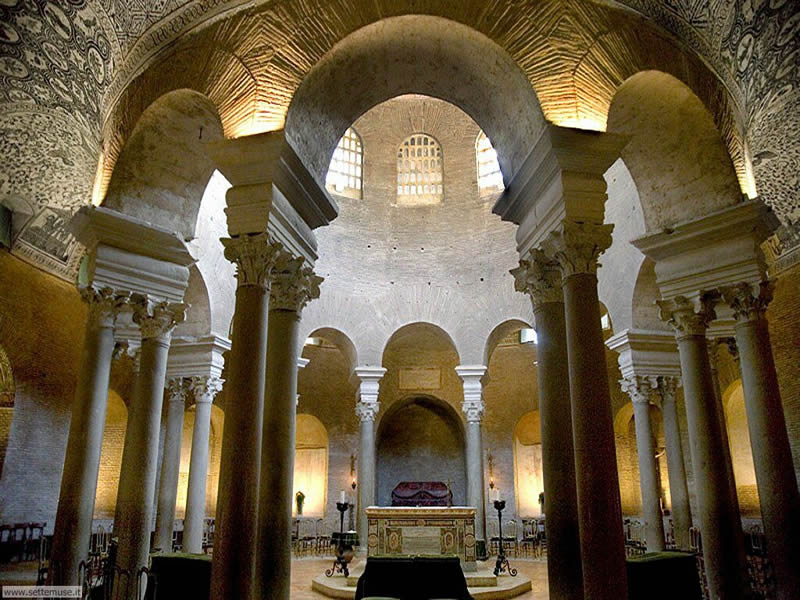
Historical
Churches of Rome
The locations of all places are shown on my Google-Earth Map
Northeastern Rome: Via Nomentana
Google-Maps (enlarge the magnification, this map is in 3-D)
Mausoleum
di Santa Costanza
The
Daughters
of Constantine, 360-370
Via
Nomentana 349

Santa Costanza was built after Emperor Constantine I's (272-337 AD)
death as a place of burial (mausoleum). Despite its name, the
mausoleum of Santa Costanza was probably originally built for
Constantia's younger sister Helena, who was married to emperor Julian
the Apostate (ruled 361-63). As the daughter, sister and wife of
successive emperors, Helena had considerable status, so it makes
sense she would receive a burial place of great splendor.
Later,
Constantina was venerated as a saint with the Italian name of
Costanza, and the church was dedicated to her.
The ruins of the
adjacent funerary church dedicated to Sant'Agnese, built around 320
by Constantine, are clearly visible on GE.
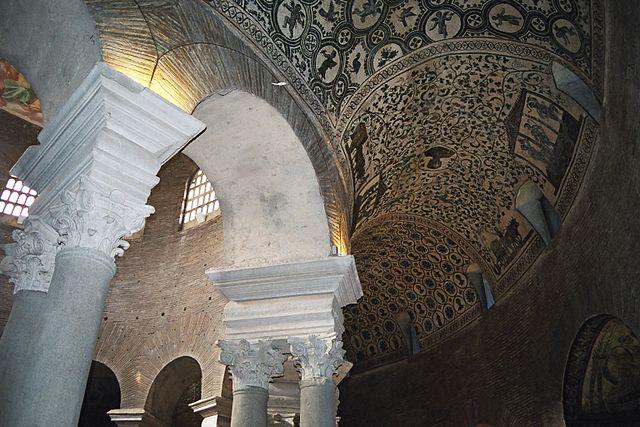
The highlight of Santa Costanza are the late 4th cent mosaics in the barrel vaulting of the ambulatory.
Via Nomentana 349 (bus nr 36, 60, 84, 90), ☎ 068610840. Mon to Sat
9am-noon, 4-6pm, Sun 4-6pm.
More...
The Basilica di Sant'Agnese Fuori le Mura is a 7th century church notable for its mosaics,the shrine of the 13-years-old child martyr, St. Agnes, and catacombs. - To see the lower levels you need some personal introductions!
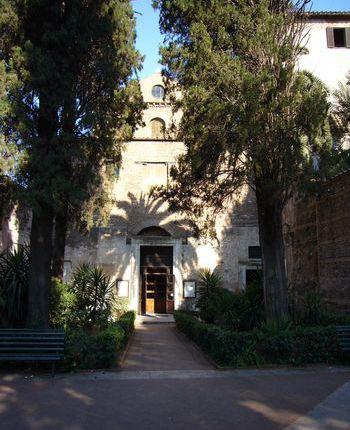
The romantic entrance to Sant'Agnese
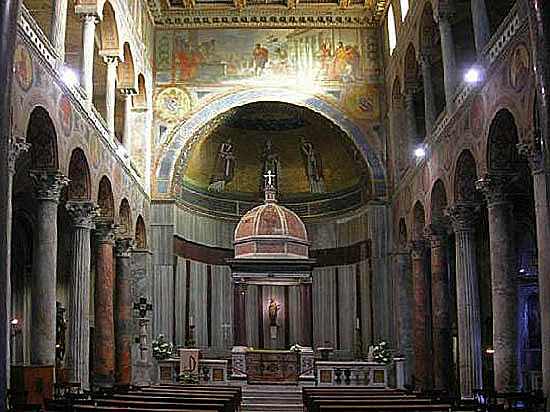

The Apsis Mosaic (625 restored)
The catacombes below the chuch have several interesting early mosaics but are accessible only by special permission

Christ
handing St. Peter the keys (4th
century)
The
naïve, early mosaics freely mix Christian symbolism and pagan
motifs.
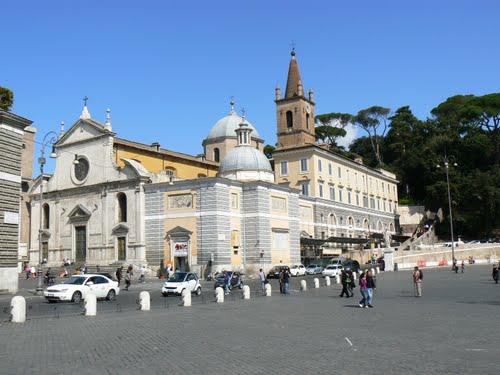
Santa Maria del Popolo was reconstructed by Baccio Pontelli and Andrea Bregno in 1472-1477, commissioned by the association of the Lombards of Rome, creating an excellent example of Italian Renaissance architecture. In 1655-60 the facade was modified by Gian Lorenzo Bernini, who was asked by Pope Alexander VII to update the Renaissance church to a more modern Baroque style

The church is a treasure-trove of art. There are a couple of beautifully restored paintings by Caravaggio together with a sculpture by Bernini, frescoes by Pinturicchio and mosaics by Raphael.
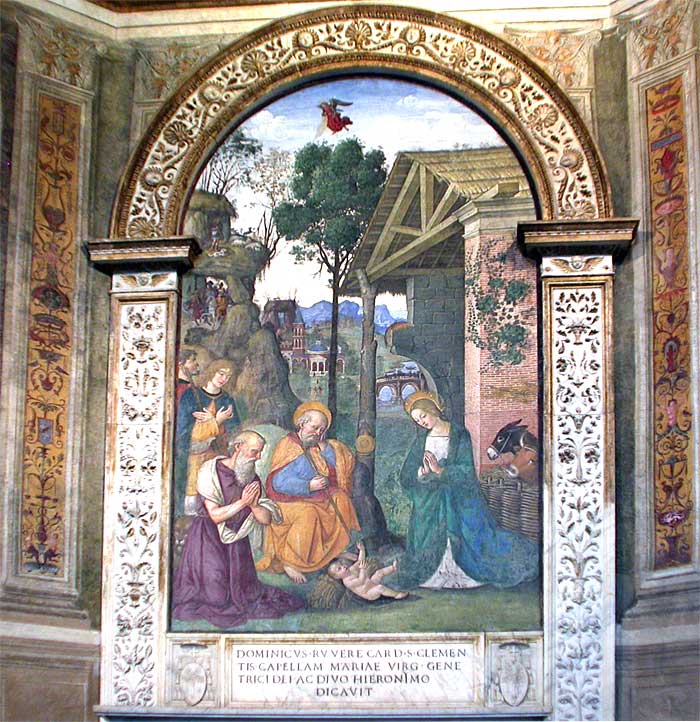
Pinturicchio, Adoration of the Shepherds (around 1461)
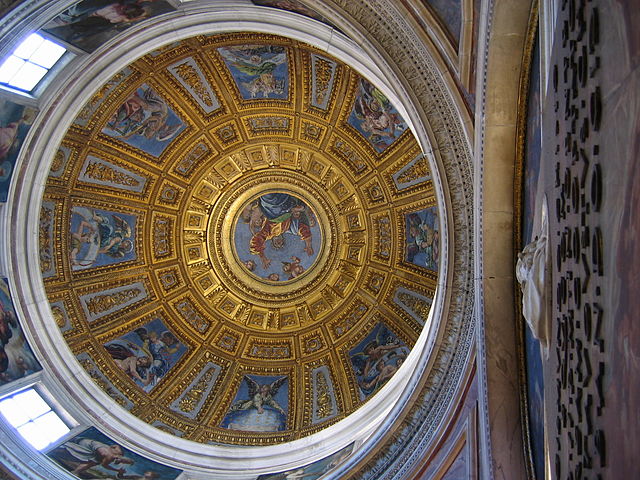
“The Creation of the World”, the only mosaics by Raphael in the
dome of the Capella Chigi
executed from Raphael's cartons by the
Venitian master Luigi di Pace, 1516
|
|
|

Bernini, Habakkuk and the Angel, Chigi Chapel after 1654
Piazza del Popolo 12 (bus nr 95, 117, 119, 490), ☎ 063610836. Mon to Sat 7am to 12noon, 4 to 7 pm., Sun 7.30am to 1.30pm, 4.30to 7.30pm